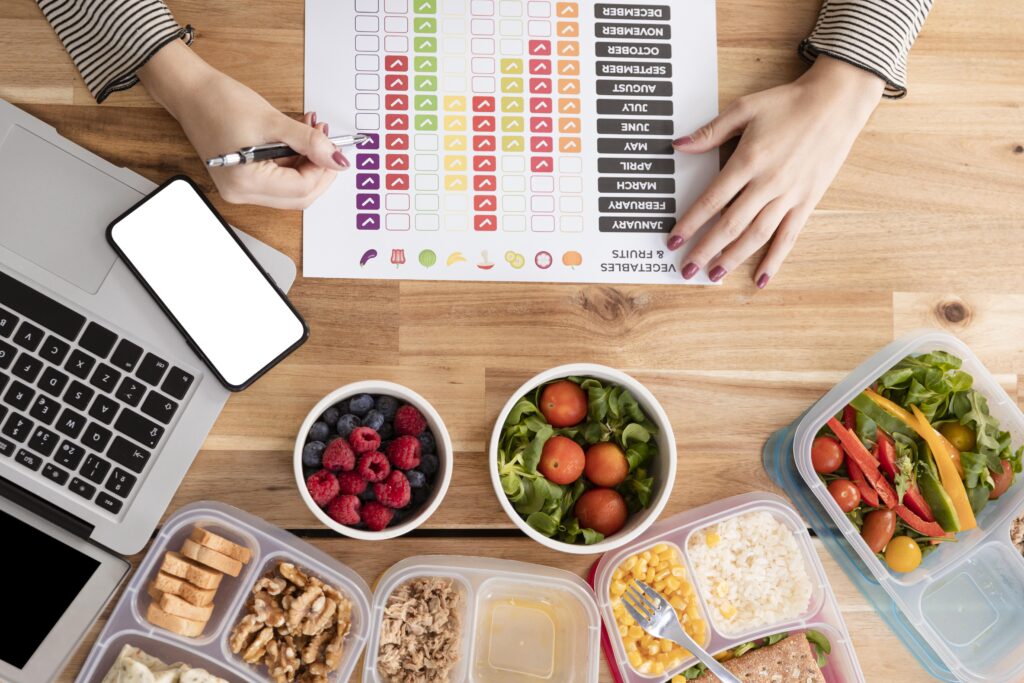How to Create an Optimal Meal Plan That Works
Creating an optimal meal plan isn’t about strict dieting or trendy restrictions—it’s about designing a structured, practical approach to eating that supports your health goals and fits into your everyday routine. Whether you’re aiming to lose weight, build muscle, manage a health condition, or just eat better, your meal plan should reflect your personal needs, schedule, and food preferences. It should also account for factors such as your daily energy expenditure, cooking ability, and even your emotional relationship with food.

A well-structured meal plan isn’t just a tool for nutrition—it’s a framework that helps reduce decision fatigue, improve consistency, and develop sustainable habits over time. When done right, it strikes a balance between nourishment and enjoyment, enabling you to meet your goals without compromising your social life or overall satisfaction. In this guide, we’ll break down the key steps and considerations to build a meal plan that works—and one you’ll stick to without feeling deprived or overwhelmed.
Know Your Goals Before You Start
Every good meal plan starts with a clearly defined goal. Are you trying to lose fat, maintain your weight, increase energy, or gain muscle? Different goals will require different calorie targets, macronutrient distributions, and meal timing strategies. For example, someone aiming to lose fat may focus more on portion control and calorie deficit, while someone aiming to gain muscle may need higher protein intake and consistent meals throughout the day.
It’s also important to take into account your daily routine, activity levels, and any medical conditions. For people living in busy urban environments or those managing specific health challenges, tailored services like meal plan dubai offer convenient options that combine balanced nutrition with flexibility, saving both time and effort while staying on track with health objectives.
Key Principles of a Balanced Meal Plan
A solid meal plan relies on some basic nutritional principles. Here’s a breakdown of the components that make a meal plan both effective and sustainable:
- Macronutrient balance. Each meal should include a healthy mix of carbohydrates, proteins, and fats. Avoid extreme reductions of any of these unless medically required.
- Micronutrient diversity. Incorporate fruits, vegetables, nuts, seeds, and whole grains to ensure you’re getting essential vitamins and minerals.
- Portion control. Use your hand or a scale as a guide. Overeating even healthy food can sabotage your goals.
- Meal timing. Plan your meals to match your energy demands throughout the day. For most people, a larger breakfast and lunch, with a lighter dinner, works well.
- Sustainability. The plan should suit your lifestyle, food preferences, and budget. If you can’t stick with it for more than a week, it’s not optimal.
These principles work together to keep your energy stable, curb cravings, and support your body’s long-term health. By focusing on balance instead of elimination, you create a way of eating that’s easier to sustain and more enjoyable over time.
Sample Weekly Meal Structure
To illustrate what an optimized meal plan might look like, here is a sample weekly structure designed for someone aiming for general wellness and moderate activity levels.
| Day | Breakfast | Lunch | Dinner | Snack |
| Monday | Oats with banana and almonds | Grilled chicken + quinoa salad | Baked salmon + steamed broccoli | Greek yogurt with berries |
| Tuesday | Scrambled eggs + whole grain toast | Tuna wrap + green salad | Turkey stir-fry + brown rice | Apple + peanut butter |
| Wednesday | Smoothie (spinach, banana, protein) | Chickpea curry + rice | Chicken soup + roasted veggies | Mixed nuts |
| Thursday | Greek yogurt + granola | Grilled tofu + couscous | Shrimp pasta + mixed greens | Cottage cheese + pineapple |
| Friday | Boiled eggs + avocado toast | Beef stew + mashed sweet potato | Veggie lasagna | Dark chocolate + almonds |
| Saturday | Pancakes (oat flour) + berries | Chicken caesar wrap | Grilled fish + quinoa | Protein shake |
| Sunday | Veggie omelet + toast | Leftover stew or salad bowl | Homemade pizza (whole grain base) | Popcorn + herbal tea |
This sample table isn’t rigid—it’s meant to offer a balanced starting point. Each meal includes a good mix of protein, fiber, and healthy fats, which helps manage appetite and energy levels. The inclusion of variety reduces the chance of diet fatigue and allows for flexibility based on the availability of ingredients and preferences.
One List You Actually Need: Meal Planning Checklist
Here is a straightforward checklist to guide your meal planning each week:
- Define your nutritional goal (e.g., fat loss, muscle gain, maintenance)
- Calculate your approximate daily calorie needs
- Choose a consistent meal structure (3 meals + 1–2 snacks)
- Build meals using whole, minimally processed foods
- Include a variety of colorful vegetables and fruits
- Prepare a grocery list based on your weekly meal structure
- Batch cook or prep meals in advance when possible
- Stay hydrated—track your water intake
- Allow room for flexibility (e.g., one unstructured meal per week)
- Evaluate your plan every week and adjust as needed
This checklist ensures you stay organized and consistent, which is especially useful when your schedule gets hectic. Prepping and planning even just a few meals ahead of time can prevent impulsive eating and save money in the long run.
Meal Planning is a Skill You Build
Creating an optimal meal plan isn’t about being perfect—it’s about being prepared. With time, you learn how to adapt your plan around your life, not the other way around. Start with the basics, adjust based on what works for your body, and don’t be afraid to experiment with new ingredients and ideas. The more familiar you get with your needs and your patterns, the more natural meal planning becomes. What starts as a conscious effort eventually turns into a lifestyle that supports your goals without added stress.





